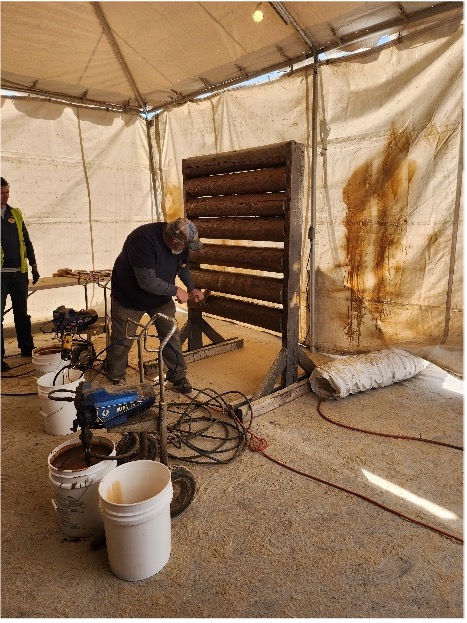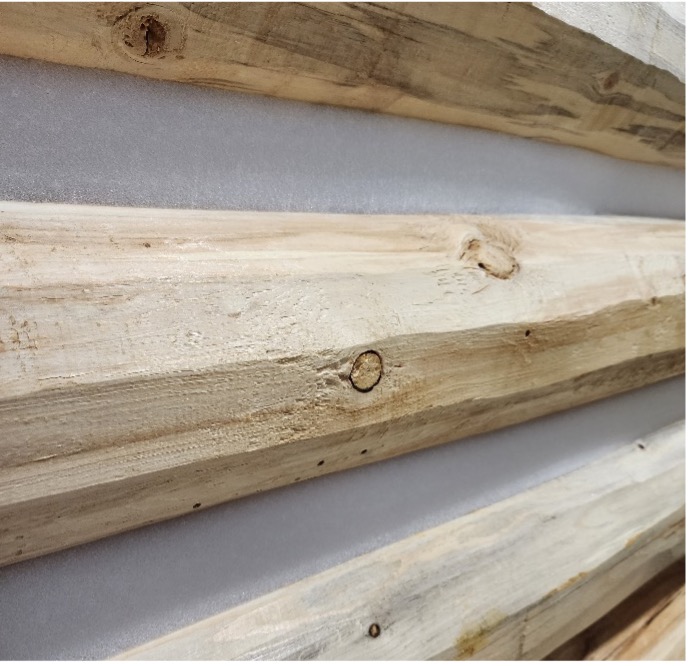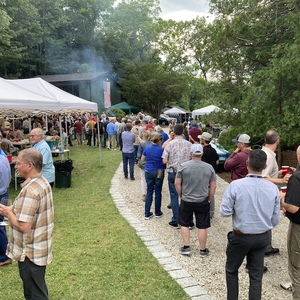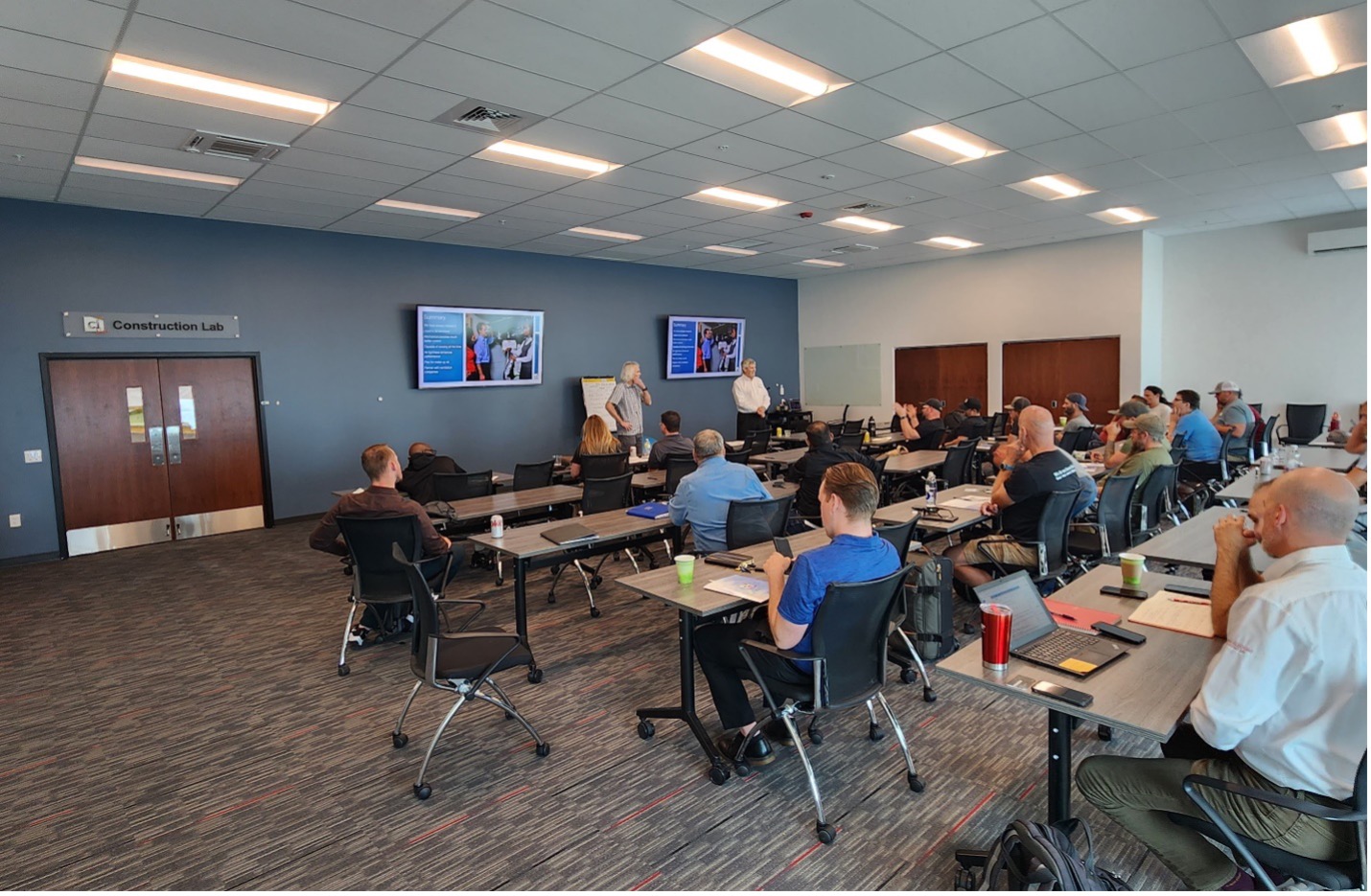
I’ve received training from many manufacturers over the years. They have a vested interest in seeing you succeed. If you have a good experience, you are likely to use their products again; if you have a poor experience, you’re going to talk about it. Good manufacturers provide some sort of product training, whether via information on their website or a YouTube video. Many also offer on-site education with a factory representative.
Recently, I took a trip to Denver, Colorado, to attend factory training at Sashco, a sealants manufacturer. Two topics were addressed: log homes and operating a successful construction business. Although the latter was geared toward the log home contractor, the information applies to all construction businesses. I’ll briefly talk about the business training at the end of this post, but I will focus on the log home–related information because it was some of the best training I’ve received on the subject.
Two Sashco senior chemists taught wood science (the most fascinating aspect to me), along with coatings, sealants, and wood preservatives. One of the educators has a 30-year career in the paint and stain industry, and another owns a log home–restoration business; the latter provided hands-on training for removing old stains and sealants from a log home, applications of new sealants and coatings, and the log-seam sealing or chinking process. A blasting equipment supplier talked about the technology used to sand-blast logs (we used a glass medium, which is a good choice for stripping sealants off logs).
We learned how logs compare to dimensional lumber, and how they handle both heat and water differently than stick-framed construction. Other topics included measuring wood moisture and recommended levels for applying finishes, as well as reasons paints and stains fail on wood and other surfaces. (Paints are not recommended for logs, not because of any moisture-trapping properties but because they hide damage.) I learned I was wrong about why a paint or stain fails on a wood surface; I thought moisture moving through and out of the wood caused paint to blister, but it’s the expansion and contraction of the wood itself, as well as UV damage that cause most paint/stain failures.

We looked at water’s ability to enter a log and cause damage. The adjacent photo shows a “D-log,” which is a milled log that looks like the letter D. Notice there is a crack in the upper right-hand area of the log; this crack has allowed water to enter, causing rot to form. The training emphasized the need for sealing logs against water intrusion, and the instructor stressed the importance of routine inspection of checks and cracks, especially on the upper curvature. Maintaining a water protection seal is key to the longevity of log structures.
Another section covered mildew (mold), algae, and dirt. It’s best practice to remove all foreign and biological material before performing any maintenance, such as chinking or top-coating logs with a new finish. The chemists demonstrated how bleach can be used to identify and remove certain biological materials from log surfaces. They explained that the key to effective bleach use is the age of the product; bleach loses its effectiveness with age, so fresh bleach is needed for mold removal. Even 6-month-old bleach may not be effective. The instructor suggested purchasing the powdered shock chemical used for pool and hot tub maintenance and mixing your own bleach.
Wood prep and stain
The class had the opportunity to use media blasting on log wall mockups. We put on personal protection equipment that included a Tyvek suit, gloves, hearing protection, and a hood pressurized with fresh air. We operated a high-pressure media blaster. The glass media was exiting a 7/16-in.-diameter nozzle at 75-lb. pressure.

Next, we reapplied a stain product to the logs we had blasted using a paint sprayer and block brush. For many of us in the class, this was our first experience in blasting and finishing applications on a log structure. I was amazed at how fast the process can happen with the right equipment.
Day two had us installing chinking, meaning sealants for very large joints—up to 6 in. The sealant was applied from a pump pushing the product from a 5-gal. bucket, out a 1/2-in.-diameter application tip. We were taught the proper way to install a backer rod, a few different application techniques, and ways to make the finished product look good. The key to chinking is to remember, not only is it important the finished product looks good, but it must perform as both a water and air barrier.

The second day wrapped with a class on sealants: acrylic-based, solvent-based, polyurethanes, silicones, butyls, and other sealant technologies. We also covered penetrating stains and why non-drying oils should not be used. We heard about people applying used motor oil to their log homes to better protect the wood surfaces. The chemist made clear that non-drying oils for log cabins are not a good idea and the smell of used motor oil will stick around for a while.
This section of training also covered the use of a systems approach when finishing a log home. The chemists demonstrated Sashco’s product line; it includes Capture, a stain formulated for log home applications, and Cascade, the topcoat for the stain. They also shared suggestions for other manufacturers’ products and systems, which meant to me that this training wasn’t just about selling Sachco’s products; it was more about best practices for log homes.
Running a business
Days three and four concentrated on the business of operating a construction company. The main presenter owns a log refinishing company. He showed how his role evolved from having a job to owning a company. He approaches his business as a matter of “selling time,” rather than a product or service. He knows how long each of his processes takes; from there he sets his work schedule based on how much time is available each year. (Log refinishing is seasonal in most areas of the country.)
Other instructors included the owner of Sashco, Les Burch, who gave a talk called “Finding Your Why.” He shared his views on company culture and values. We also heard from a lawyer about the importance of having a contract and understanding the laws surrounding employees. A “process engineer” showed us how to better manage time and improve systems on a job site. He convinced us we could boost both time management and systems efficiencies by 20% without a major investment in the company.
Sashco’s director of human resources spoke about critical conversations business owners must have; and one of their marketing managers did an exercise on setting goals. Overall, the business portion of the training was a surprise. As a business owner, I’ve experienced the challenges of owning and operating a small construction company. I wish I had had this kind of education years ago.
What’s the value?
Why did I take the “Zero Failures Log Home” training class? After all, the new construction projects I’m involved with do not include log home construction. The biggest reason is that I perform about 10 energy audits on log homes every year. Having a better understanding of where they fail, how they should be maintained, and strategies for reducing their energy consumption will help me provide better solutions for the owners of these structures.
It’s true log homes are a small part of the residential construction industry, but they are also notoriously problematic when it comes to energy efficiency, among other issues. Understanding how they are constructed, their maintenance schedules, and where they can be improved can help both homeowners and log home builders. You can find more information on Sashco’s two factory trainings, both called “Zero Failures.” The four-day log home and business education training that I took is one; the second is a two-day event all about caulking and sealants technology in traditionally built homes, with some business education thrown in. Learn more about both offerings at Zero Failures | Sashco.
Other posts in this series
Training for the Trades, Part 1
Training for the Trades, Part 2
Training for the Trades, Part 3
________________________________________________________________________
Randy Williams is a builder and energy rater based in Grand Rapids, Minnesota. Photos courtesy of the author.
Weekly Newsletter
Get building science and energy efficiency advice, plus special offers, in your inbox.















2 Comments
Your description of the training in Denver sounds intriguing, especially the insights into wood science and the practical aspects of log home restoration. It's clear that Sashco took a comprehensive approach to equip attendees with the necessary skills.
I appreciate your post on the training you received from Sashco regarding log home maintenance. It's true that manufacturers often invest in training to ensure their customers' success, and it's a win-win when they provide valuable knowledge.
For those interested in exploring similar training opportunities, you can check out this training provider in malaysia https://trainingasia.com.my/ . They offer a wide range of courses and programs that can be beneficial for individuals and businesses looking to enhance their skills and knowledge.
Thank you for sharing your experience, and I hope others find this information helpful in their pursuit of training and education in the construction industry.
Log in or create an account to post a comment.
Sign up Log in